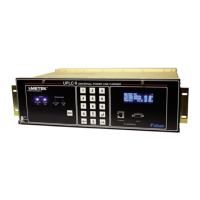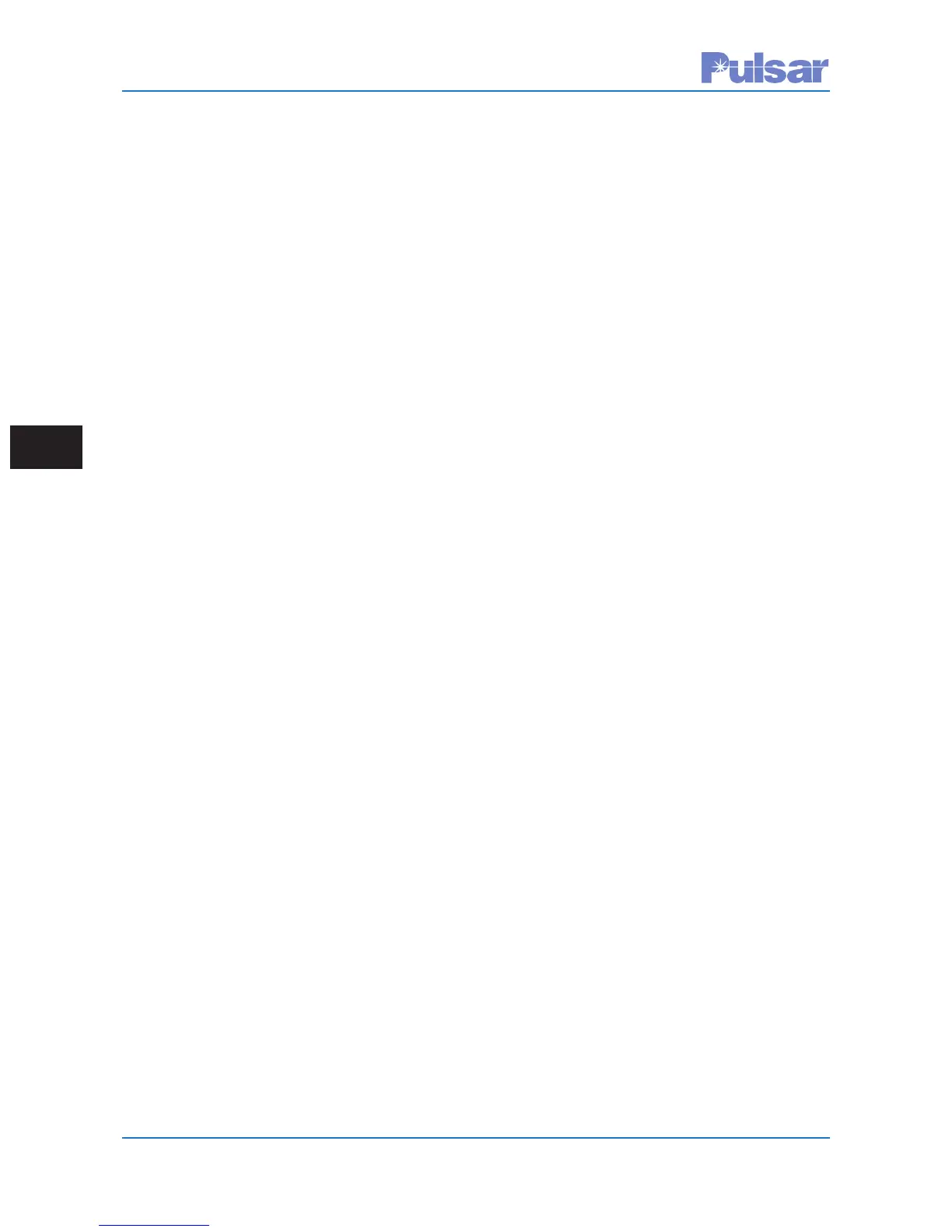Page 6–8
UPLC-II™ System Manual
If you have a 3-terminal line or more terminals, a
p
op-up box will appear after clicking on loopback
test so you can choose to which unit you want to
do a loopback.
6.4.3 Remote-Initiated Periodic Tests
If the master fails to send a test or is late, then a
remote initiates its own checkback test. You can
always manually request a test via the Web page or
Front Panel test menu on the remote UPLC-II™.
But the remote automatically does a checkback
test if it detects the master is late. When a remote
is set to do automatic periodic tests, it determines
the master is late if it does not receive a checkback
request within the user period plus some delay, or
grace period. For remote #1, this grace period is
five minutes.
For example, let's say your remote is set for auto-
matic periodic testing, with a period of eight
hours. If it does not receive a checkback test with-
in eight hours and five minutes, it executes a
checkback test. If this test is successful, both the
master and the remote's periodic timers are restart-
ed at roughly the same time, and the master takes
over for subsequent checkback tests, if both units
are set for the same periodic interval. The periodic
timer starts as soon as the unit is powered, so that
one will have a head start on the others. After the
first successful checkback test, all the periodic
timers in the network are synchronized, and the
master initiates any future tests.
If you have more than one remote in your system,
each has its own unique grace period. Remote #1
waits five (5) minutes, remote #2 waits 10 min-
utes, remote #3 waits 15 minutes, and so on.
For example, if neither remote #1 nor the master
has initiated a checkback test for the interval plus
10 minutes, remote #2 executes a test.
For this scheme to work properly, it is important to
keep all the settings similar. If the master is set for
automatic periodic testing, all remotes should also
be set this way. If not, you may have more check-
back tests occurring than you would expect at
equally unexpected times.
6.4.4 Remote-Initiated “Hours of the
Day” Tests
Just as with remote-initiated periodic testing,
remotes set to “Hours of the Day” testing initiate
their own checkback tests if the master does not do
a test in time. The "grace" period is longer for this
mode: user time + 10 minutes for remote #1, user
time + 15 minutes for remote #2, etc. That allows
this scheme to work even when there is up to five
minutes difference between the checkback units'
clocks.
For automatic timed testing, the clocks in the mas-
ter and the remotes should be fairly close.
You can enable the automatic clock synchroniza-
tion feature to keep your clocks synchronized.
When enabled, the master synchronizes all remote
clocks to its own time starting at 12:30 a.m. In
practice, the synchronization is rough, within
about +/- 2 seconds, but that is sufficiently accu-
rate for timed checkback testing.

